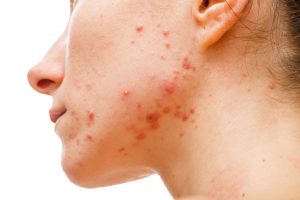Around the age of 5 to 6, most children will have lost all their baby teeth and developed a complete set of permanent teeth. However, that does not mean that all teeth are here to stay. As people age, it’s widespread for them to experience some form of tooth loss due to various issues. Depending on one’s oral hygiene habits and other health factors, the teeth may disappear as early as the late twenties or as late as one’s sixties.
Statistics show that by the time people reach the age of 35, 25% will have lost at least one tooth due to decay or gum disease. By 65 years old, more than three-quarters (76%) of adults have experienced tooth loss, and about 25% are missing all of their natural teeth. As people age further, these numbers tend to rise, with more than 30 million Americans over 65 having no remaining natural teeth.
Residents from rural areas tend to lose their teeth earlier than those living in urban areas due to poorer access to dental care and higher smoking rates, among other factors. Research also suggests that older adults who are socially disadvantaged are even more likely to lose all their natural teeth compared with those who are not socially disadvantaged.
Even though tooth loss is quite common among older generations, people can still take steps to reduce their chances of losing their remaining teeth. Here are a few tips for doing just that.
Maintain Dental Hygiene
Maintaining good oral hygiene is one of the most critical steps in protecting your teeth from tooth decay and gum disease. Good oral hygiene practices, including brushing twice a day with fluoride toothpaste, flossing once daily, and regular dental check-ups/cleanings, help remove plaque build-up on the teeth surfaces, which can eventually lead to tooth loss.
Brushing your teeth removes bacteria that can cause cavities and gum disease. The American Dental Association (ADA) recommends brushing at least twice daily and using a soft-bristled brush that comfortably fits your mouth. It is also essential to replace your toothbrush every 3–4 months or sooner if the bristles become frayed. Additionally, ADA recommends using ADA-accepted fluoride toothpaste, as fluoride helps strengthen the enamel on your teeth and prevents decay.
Flossing helps remove plaque between your teeth and under the gumline, where a brush cannot reach. Flossing should be done at least once a day for optimal results; however, it can be more effective when combined with regular brushing and rinsing with an antiseptic mouthwash.
Eating Healthy Food
Eating a balanced diet is essential for maintaining good dental health and preventing tooth loss. Healthy foods like fruits, vegetables, low-fat dairy products, and lean proteins can help strengthen the teeth and gums. Foods high in fiber can also be beneficial as they stimulate saliva production, which helps to remove food particles from the mouth while neutralizing acids that cause decay.
If you feel that your teeth are starting to show signs of wear and tear, you should adjust your diet accordingly. Avoid or minimize sugary foods and drinks, including sports drinks and sodas, as they contain high amounts of sugar that can contribute to cavities. Instead, opt for healthy snacks like fresh fruits and vegetables or dairy products like yogurt that are low in sugar.
Visiting the Dentist More Often

Visiting the dentist more often can also help prevent tooth loss. Regular dental visits allow dentists to monitor your oral health and identify potential issues before they become severe. The American Dental Association recommends that adults over 65 have a comprehensive oral health assessment every six months. In contrast, other adults should still aim to visit their dentist at least once or twice a year for a check-up and cleaning.
During these check-ups, the dentist will look for signs of decay and disease, as well as any other issues that may be present in your mouth. If any problems are detected, you can promptly prevent them from worsening. For example, if you are showing gum disease or cavities, your dentist may recommend fluoride varnish, dental sealants, or a root canal to help prevent further damage.
Tooth implant procedures might be the only way to replace lost teeth if it is too late. In this case, you must discuss the best options for restoring your smile with your dentist. There will be a lot of considerations to make, such as the type of implant, the placement of the implant, and the overall cost.
Final Thoughts
Ultimately, having healthy teeth is possible even when you are losing them. The key is to follow a regular oral hygiene routine, eat a balanced diet, and visit your dentist regularly so you can address any issues quickly before they become too severe. With these steps in place, you should have no problem continuing to enjoy your beautiful smile despite advancing age.













